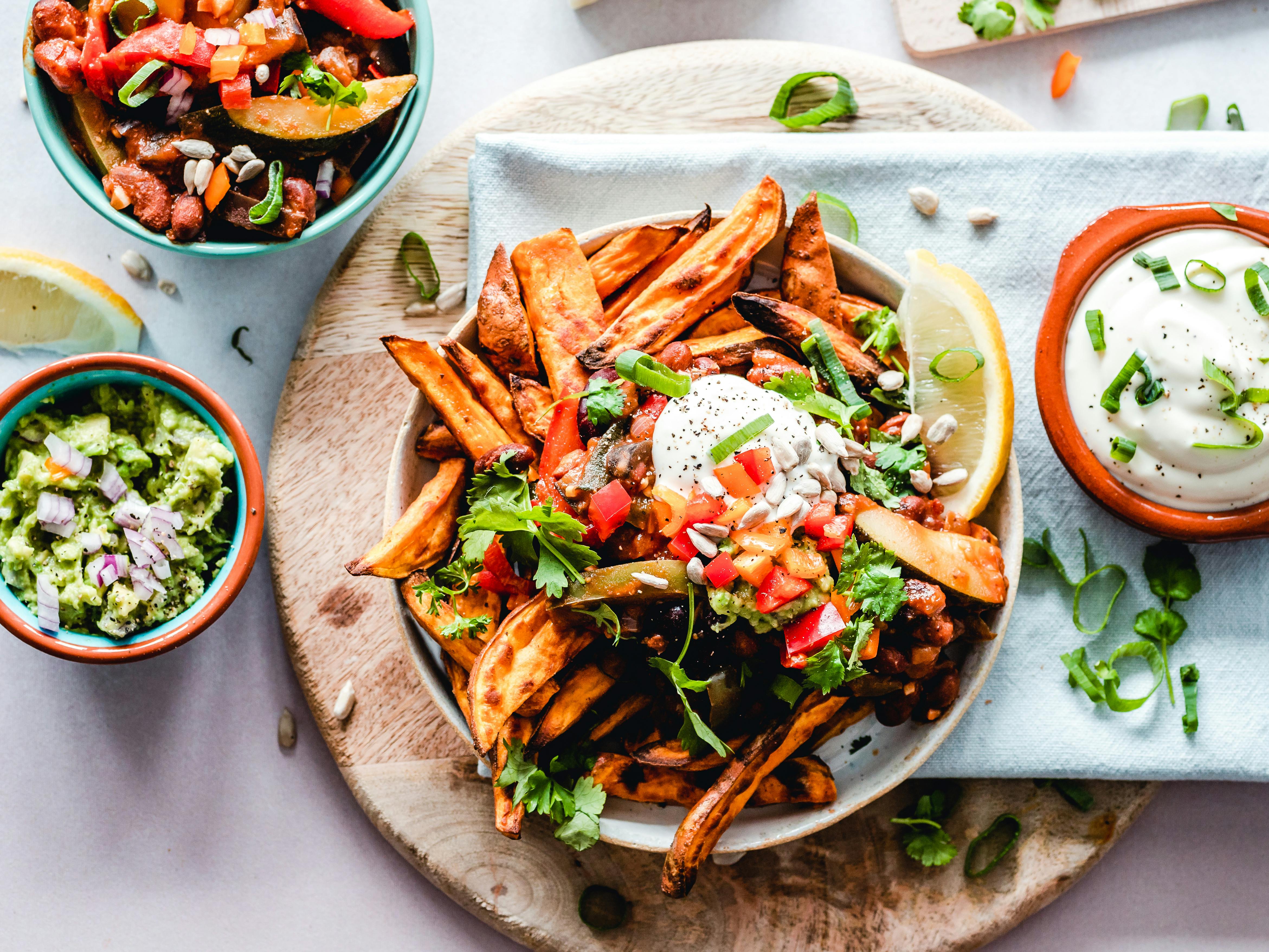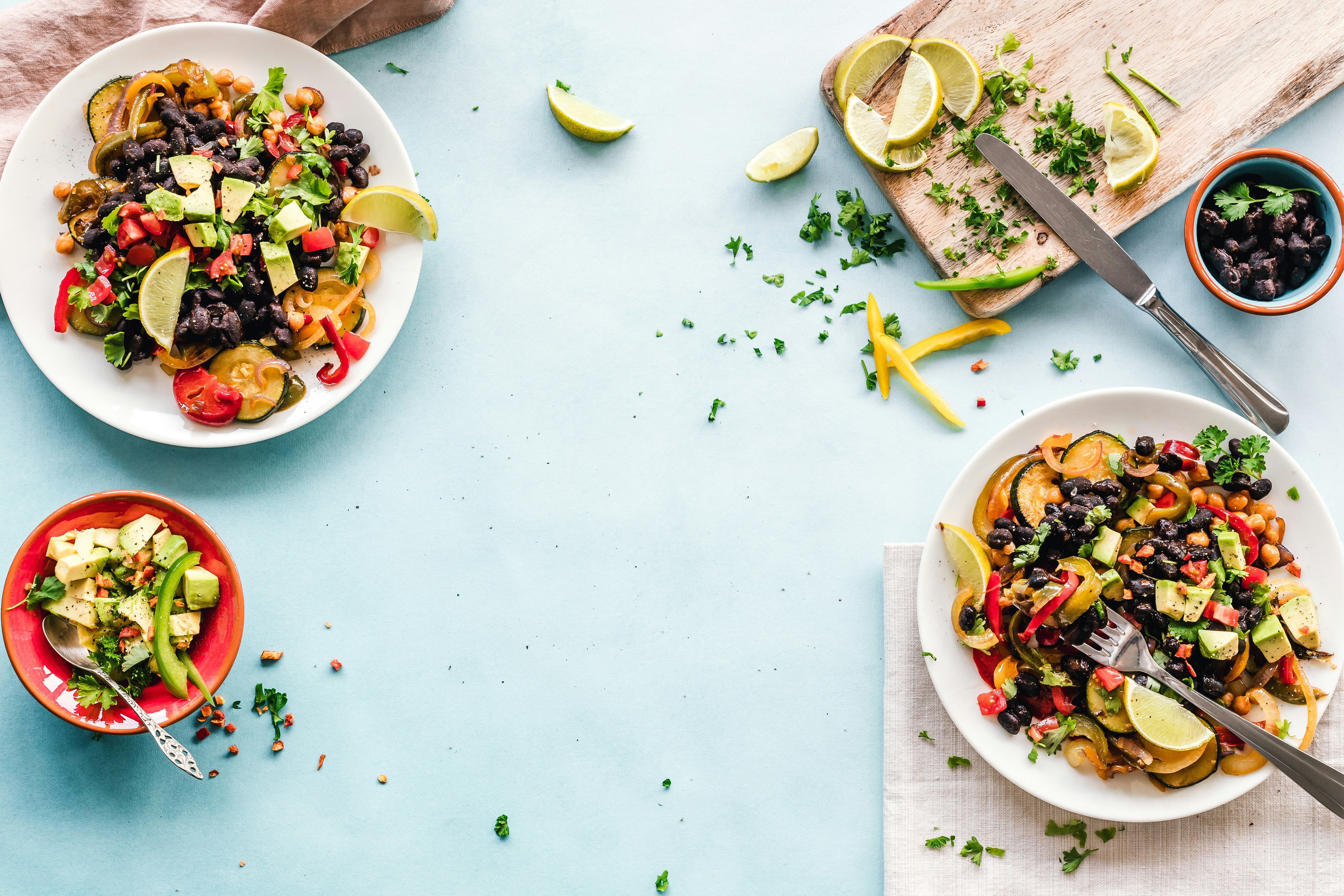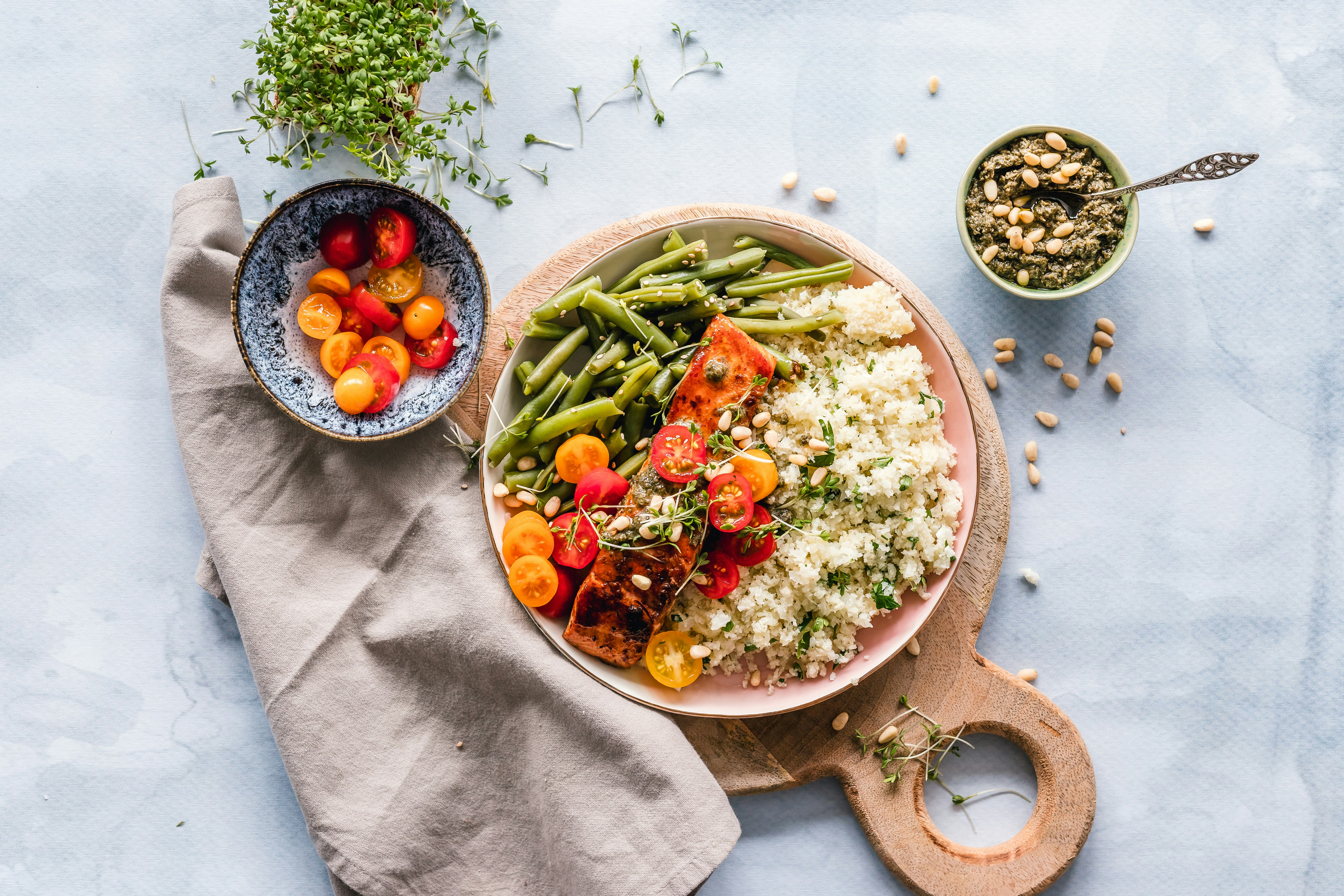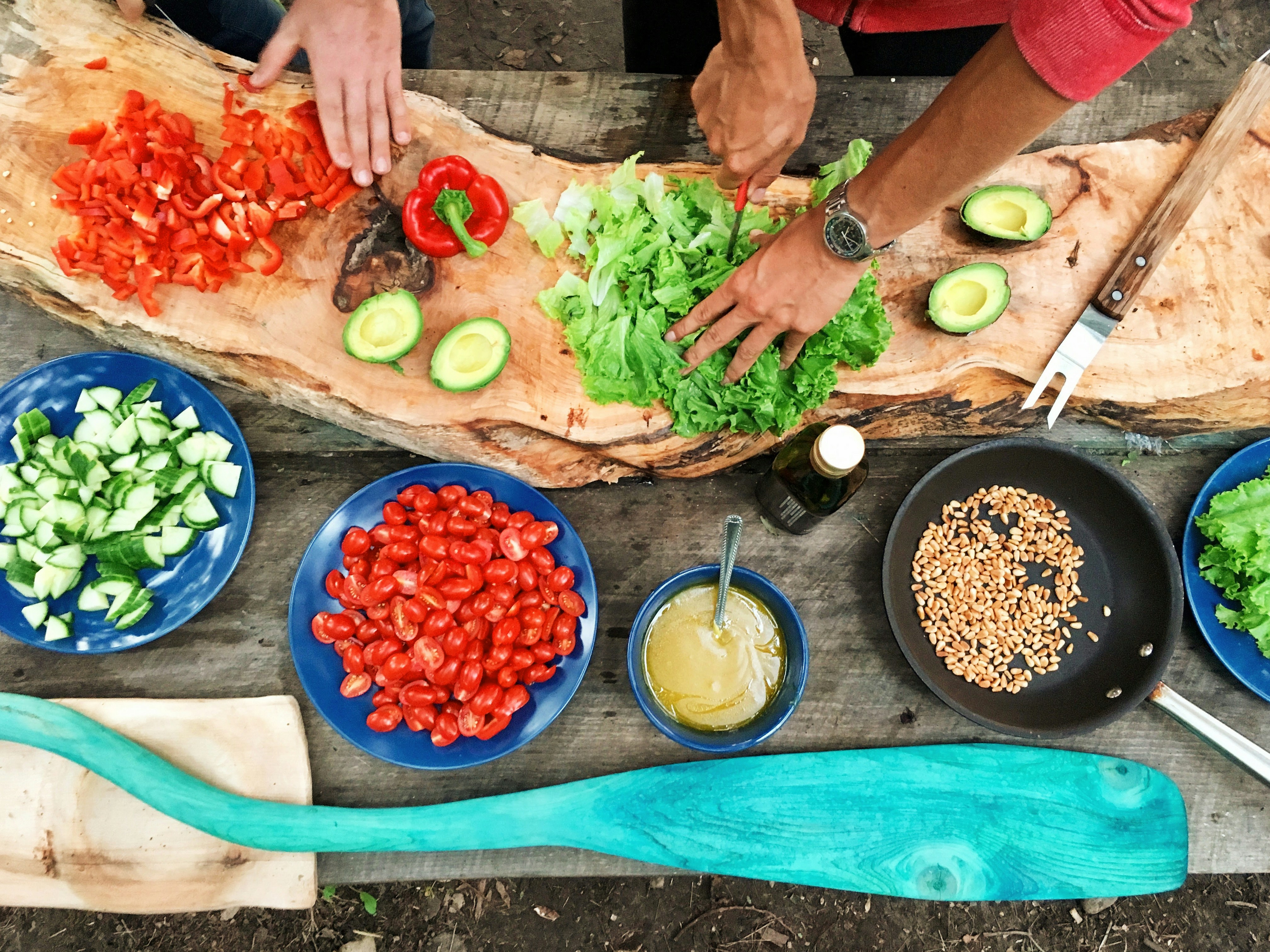Image Source: Unsplash (Royalty-Free)
Between classes, part-time jobs, and social commitments, 78% of college students report feeling too busy to cook nutritious meals. With the average student spending $4.50-$7.00 per fast food meal, dining out drains budgets fast—especially when 43% of undergraduates face food insecurity. This guide reveals how strategic meal prepping can save you $100+ monthly while ensuring you eat well. We’ll explore practical strategies, affordable recipes, and storage hacks tailored for busy academic lifestyles.
Why Meal Prepping Transforms Student Life
Students who meal prep report saving 5-7 hours weekly on food decisions and cooking. Let’s break down the benefits:
Time: Your Most Valuable Resource
A 2024 nutrition study found that batch cooking reduces daily kitchen time by 64%. Instead of daily cooking marathons, dedicate 2-3 hours weekly to prep:
- Sunday Sessions: Cook base ingredients (grains, proteins)
- Wednesday Refreshers: Add fresh veggies to meals
Financial Wins Add Up Fast
The USDA reports that home-cooked meals cost $4.31 less per serving than restaurant alternatives. For a student eating two daily meals out, prepping could save:
| Meals/Day | Weekly Savings | Yearly Savings |
|---|---|---|
| 2 | $60.34 | $3,137.68 |

Image Source: Pexels (Royalty-Free)
Strategic Meal Planning 101
Effective planning prevents food waste—critical when 31% of student groceries get tossed unused.
Build a Budget Blueprint
The USDA’s Thrifty Food Plan suggests students allocate $55-$75 weekly for groceries. Maximize this with:
- 50% Staples: Rice, oats, beans
- 30% Proteins: Eggs, chicken thighs, tofu
- 20% Fresh Produce: Seasonal veggies, frozen fruits
The 3-2-1 Shopping List Strategy
Simplify grocery trips with this template:
- 3 versatile proteins (e.g., chickpeas, ground turkey)
- 2 complex carbs (quinoa, sweet potatoes)
- 1 sauce base (peanut butter, marinara)
5 Nutrient-Packed Recipes Under $2/Serving
These meals prove cheap eats can be delicious:
Breakfast: Overnight Oat Jars ($0.85/serving)
Layer in mason jars:
- ½ cup oats
- 1 tbsp chia seeds
- 1 cup almond milk
- Top with frozen berries
Lunch: Chickpea Salad Wraps ($1.20/serving)
Mash 1 can chickpeas with:
- 2 tbsp Greek yogurt
- 1 tsp curry powder
- Diced celery
Wrap in whole-grain tortillas with spinach.
Image Source: Unsplash (Royalty-Free)
Smart Grocery Hacks for Students
Stretch your dollars further with these evidence-based strategies:
Bulk Bin Magic
Rice from bulk bins costs 42% less than packaged versions. Store in airtight containers to prevent pests.
Frozen > Fresh for Nutrients
A Harvard study confirms frozen veggies retain more vitamins than “fresh” produce that’s been shipped cross-country.
Storage Solutions That Prevent Waste
Proper storage extends meal freshness by 3-5 days:
Container Cheat Sheet
- Glass jars: Sauces, soups
- BPA-free plastic: Dry snacks
- Silicone bags: Cut veggies
Freezer-Friendly Foods
Batch cook and freeze these staples:
- Lentil soup
- Whole-grain muffins
- Marinated chicken breasts
Conclusion: Your Meal Prep Journey Starts Now
By implementing these strategies, you’ll gain time, money, and better nutrition. Start small—prep just 3 meals this week. Track your savings using apps like Mint, and gradually expand your repertoire. Remember, imperfect consistency beats sporadic perfection.
“Meal prepping helped me save $200 monthly—enough to cover my textbooks!” – Sarah J., UCLA Senior
Call to Action: Share your favorite budget recipe in the comments! What’s your #1 meal prep challenge?
Further Reading
Essential Tools & Ingredients for Efficient Meal Prep
Image Source: Unsplash (Royalty-Free)
Building a reliable meal prep toolkit doesn’t require fancy gadgets. Nutritionist Dr. Elena Martinez notes: “Students achieve the best results with multipurpose tools that simplify batch cooking.” Start with these essentials:
Affordable Kitchen Staples
- 1-2 Large Baking Sheets ($10-$15 each): Roast vegetables and proteins simultaneously
- 3-Compartment Containers ($12 for 10-pack): Keep meals organized and portion-controlled
- Rice Cooker with Steamer Basket ($25): Cook grains and vegetables hands-free
Pantry Building Blocks
A 2025 USDA report found students save 22% on groceries when stocking these budget-friendly basics:
- Proteins: Canned beans ($0.89/can), eggs ($2.79/dozen), frozen chicken breasts ($3.29/lb)
- Grains: Bulk rice ($1.20/lb), oats ($2.15/18oz), whole-grain pasta ($1.99/lb)
- Produce: Frozen mixed veggies ($1.49/12oz bag), sweet potatoes ($0.99/lb), cabbage ($0.79/lb)
Case Study: University of Texas junior Maya Rodriguez cut her weekly food bill from $85 to $45 using bulk purchases. “I cook 2 cups of dry beans every Sunday instead of buying canned—it saves $6 weekly,” she explains.
5 Budget-Friendly Recipes That Scale Perfectly
Image Source: Unsplash (Royalty-Free)
These student-tested recipes cost $2.10-$3.75 per meal and stay fresh for 4-5 days:
1. Southwest Sweet Potato Bowls ($2.45/serving)
- Roast diced sweet potatoes and black beans with cumin
- Layer with brown rice, corn, and salsa
- Top with Greek yogurt instead of sour cream
2. Overnight Oats 4 Ways ($1.89/serving)
Prep 4 jars every Sunday with these flavor combinations:
- Apple Cinnamon: Oats + almond milk + grated apple + cinnamon
- Peanut Butter Banana: Oats + milk + PB2 powder + banana slices
Pro Tip: Chef and meal prep educator Liam Chen recommends “the 1-2-3 method” for balanced meals: 1 protein + 2 vegetables + 3 complex carbs per container.
Smart Storage Solutions to Prevent Food Waste
The 2025 Food Preservation Journal found proper storage extends ingredient freshness by 40%. Implement these strategies:
Freezer Hacks for Busy Weeks
- Portion Proteins: Divide ground turkey into ½ lb bags ($2.99/lb → $1.50/serving)
- Freeze Smoothie Kits: Pre-bag spinach, banana, and protein powder ($1.75/serving)
Container Science
| Food Type | Best Container | Storage Days |
|---|---|---|
| Cooked Grains | Airtight Glass | 5 |
| Raw Vegetables | Vented Plastic | 7 |
Overcoming Common Meal Prep Challenges
Image Source: Unsplash (Royalty-Free)
Time management researcher Dr. Alicia Wong’s 2025 study identified three key student pain points:
Challenge 1: Limited Kitchen Access
- Solution: Use microwave-safe containers for dorm-friendly meals
- Recipe Idea: Mason jar salads with layered dressings
Challenge 2: Meal Burnout
Rotate three base recipes weekly using the “Flavor Swap” method:
- Monday/Wednesday/Friday: Chicken bowls with different sauces
- Tuesday/Thursday: Pasta with varying veggies
Real Student Success Stories
University meal prep programs show tangible results:
Case Study: UC Berkeley’s Fuel Up Initiative
After implementing free meal prep workshops:
- 73% of participants improved dietary diversity
- Average weekly savings: $37.80
- 62% reported better focus during afternoon classes
Student Spotlight: Northwestern’s Meal Prep Club
Members collectively saved $12,000 in 2025 through bulk buying and skill-sharing. “We host monthly ‘Big Cook Sundays’ where 20 students prep together,” says president Jason Lee.
The Sustainability Bonus: Eco-Friendly Meal Prep Practices
Image Source: Unsplash (Royalty-Free)
Environmental scientist Dr. Nora Patel calculates that student meal preppers reduce food packaging waste by 11 lbs monthly. Amplify your impact:
- Use beeswax wraps instead of plastic ($18 for 3-pack)
- Repurpose glass pasta jars as storage containers
- Compost scraps using a $25 countertop bin
By combining financial savvy with eco-conscious practices, students gain nutritional stability while developing lifelong sustainability habits. Start with one Sunday prep session and gradually build routines—your wallet and GPA will thank you.





